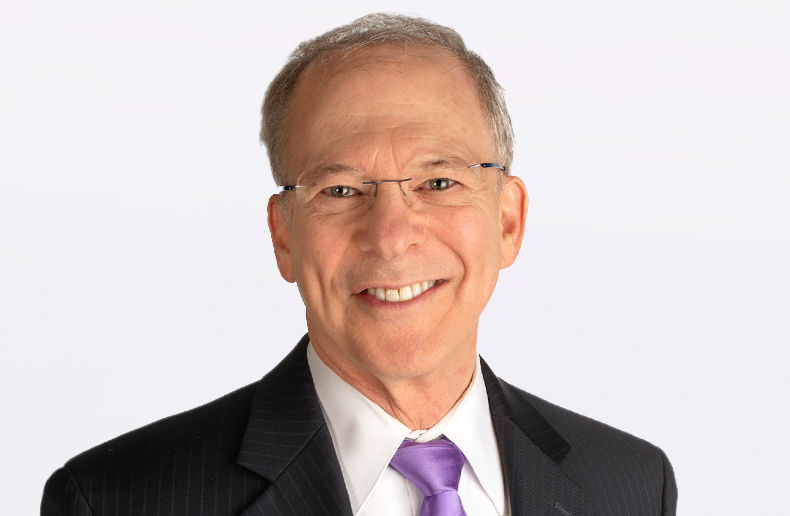What one thing can I do to be more successful?
Success is a conscious decision to do what needs to be done, regardless of the situation. The question is: “How much failure or pain will you put up with before you quit?” For prospecting advisors, the question could be “How many ‘Nos’ will you take before you quit?” or “How many closing attempts will you make before you stop asking?” There are wobbles and stumbles in any challenge. Those who succeed get up and keep going in spite of them.
But failure is painful. Kevin O’Neill, former coach of the NBA’s Toronto Raptors said after a particularly long losing streak, “We’ve discovered that losing takes a lot more out of you than winning puts back in.” Losing hurts more than winning feels good. To win, you must force yourself to play on even when you don’t feel like it anymore. There’s another key. What will you keep doing AFTER you stop feeling like it? If you stop, you cannot win.
It hurts when you lose. It hurts when someone says no. It hurts when you try and fail – but it’s part of the deal. If you can’t risk losing, you can’t win. The price of success is the risk of self-esteem. If you want to win, you must accept the possibility of losing. There is no winning without losing. There are no “Yeses” without “Nos” – and usually, many more losses and nos than wins and yeses.
Persistence in the face of fear is a matter of “mental toughness” or your ability to withstand rejection, disappointment, put offs and putdowns. The more rejection you can withstand, the more you will win. Winning is about how much losing we can put up with before we pack it in and call it a day. It’s what we will do AFTER we lose that determines our winning future.
Fear resistance builds up in a person the longer they make themselves resist in the face of fear. The first time, resistance may feel futile, but you are developing power and muscle memory. Resist fear again and you are getting a little stronger and building the strength to do it again. The more you do, the more you are able to do. It’s an ongoing commitment. That’s what it means to be a winner and it’s the number one reason they win. They keep on keeping on, despite the pain of loss.
Taking on challenges and the discipline to resist fear are both painful. The former is not easy and leads to failure. The latter is also not easy but leads to winning. Here’s the thing: “The pain of regret of not resisting is much greater than the pain of self discipline to resist”. Self discipline may be hard too, but it is easier than handling the regret of not winning.
So, when you have a challenge to winning and you are tempted to quit, remember: “All you’re left with after a crisis is your behavior during it.” If you quit, you’ll have that forever. Don’t dwell on your fear, resist it – it’s the number one reason that makes winners, winners. It’s your key to success.
What can I do to be more convincing when selling life insurance?
If you want to be convincing you must be convinced. If you are in doubt, it will be obvious to your prospects and you will not have the passion to persuade anyone.
Faking sincerity may be “the key to success in acting” according to the late producer Samuel Goldwyn but it’s not enough when selling financial services. Prospects can sniff out insincerity in an instant. When they do, you’re done.
I recall a joint call with a successful newer agent years ago to sell disability insurance to a group of doctors. After he made his presentation, the lead doctor asked the advisor a simple question. “Which policy do you own?” Great question, and it sold a policy. To the agent. He didn’t have one yet and said he was “just finalizing it”. The doctor said, “That’s great. When you have your policy, come back, show us and we’ll buy that one.” He did, and they did. Big lesson there for anyone who wants to sell more. Own what you sell.
TOT producer Paul Tompkins says he will never sell a policy he doesn’t believe in and own. Do you sell product you don’t own? If you do, you aren’t as convincing as you could be because you don’t have a stake. You’re not as successful as you could be either.
This is not to say that all your clients must have what you have, exactly. The point is that when you sell the type of product you own, you are much more convincing. Prospects have evidence of your conviction. When you do what you ask others to do, you make a compelling argument.
There’s more. Many top advisors we coach today show prospects all their personal policies as part of their sales process. It’s tangible evidence of their belief. This was a thing early in my career, but it seemed to fade away. We’re now seeing it a lot among the best advisors. These advisors “show off” their policy portfolios to prospects. Could you show off with your policy portfolio? If you can’t, it needs improvement. Improve it and you’ll sell more.
Van Mueller always has his 16 policies with him to demonstrate his conviction. I know others who have full policy summaries to show. They build their policies into their sales approach to reassure prospects. Time was you could show a million-dollar policy and impress. Today, you’ll need to show maybe 5 million. That’s impressive and shows conviction.
Lately, advisors are showing off their permanent life insurance cash values too. How convincing is that? If I showed you my million-dollar cash value and said I wanted you to have one too, would I be more compelling? How about if I wanted you to buy a $1,000 per month premium and showed you my $2000 per month premium? What if we added a zero or two to the number? Imagine.
So, whether it’s life, DI, CI, a retirement plan or investments, sharing your policies or contracts and values shares prospect risk and makes you more convincing. Demonstrate you are so impressed with your advice that you bought the policy and you’ll impress your prospects to join you too.







